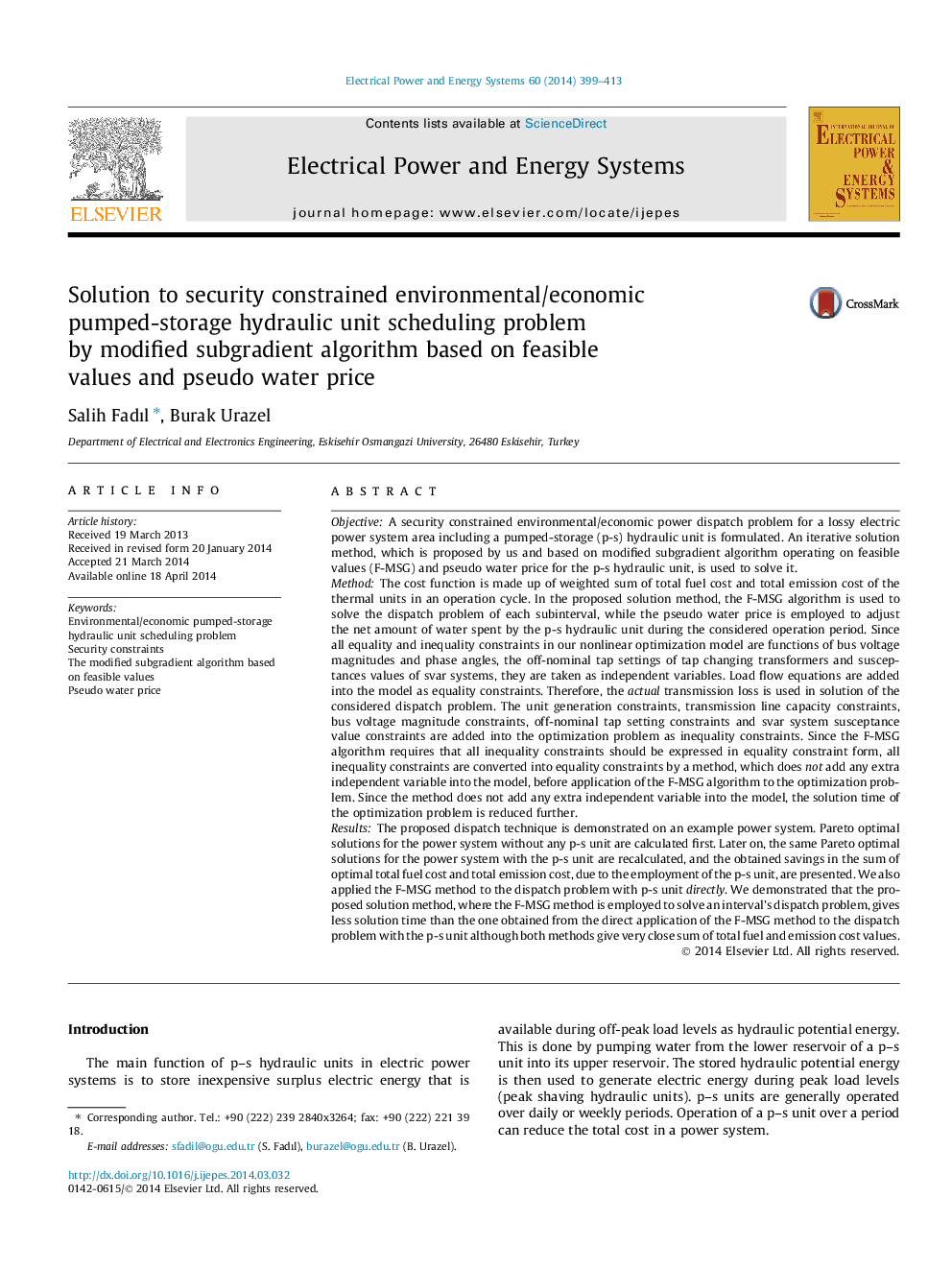| Article ID | Journal | Published Year | Pages | File Type |
|---|---|---|---|---|
| 399736 | International Journal of Electrical Power & Energy Systems | 2014 | 15 Pages |
•The proposed method can solve non-convex dispatch problems.•Bus voltages, tap ratios and susceptances of svar systems are taken as variables.•Almost the exact optimization model of a power system can be used.•The solution time is much lower than those of based on evolutionary methods.•The proposed technique can be applied to high dimensional dispatch problems.
ObjectiveA security constrained environmental/economic power dispatch problem for a lossy electric power system area including a pumped-storage (p-s) hydraulic unit is formulated. An iterative solution method, which is proposed by us and based on modified subgradient algorithm operating on feasible values (F-MSG) and pseudo water price for the p-s hydraulic unit, is used to solve it.MethodThe cost function is made up of weighted sum of total fuel cost and total emission cost of the thermal units in an operation cycle. In the proposed solution method, the F-MSG algorithm is used to solve the dispatch problem of each subinterval, while the pseudo water price is employed to adjust the net amount of water spent by the p-s hydraulic unit during the considered operation period. Since all equality and inequality constraints in our nonlinear optimization model are functions of bus voltage magnitudes and phase angles, the off-nominal tap settings of tap changing transformers and susceptances values of svar systems, they are taken as independent variables. Load flow equations are added into the model as equality constraints. Therefore, the actual transmission loss is used in solution of the considered dispatch problem. The unit generation constraints, transmission line capacity constraints, bus voltage magnitude constraints, off-nominal tap setting constraints and svar system susceptance value constraints are added into the optimization problem as inequality constraints. Since the F-MSG algorithm requires that all inequality constraints should be expressed in equality constraint form, all inequality constraints are converted into equality constraints by a method, which does not add any extra independent variable into the model, before application of the F-MSG algorithm to the optimization problem. Since the method does not add any extra independent variable into the model, the solution time of the optimization problem is reduced further.ResultsThe proposed dispatch technique is demonstrated on an example power system. Pareto optimal solutions for the power system without any p-s unit are calculated first. Later on, the same Pareto optimal solutions for the power system with the p-s unit are recalculated, and the obtained savings in the sum of optimal total fuel cost and total emission cost, due to the employment of the p-s unit, are presented. We also applied the F-MSG method to the dispatch problem with p-s unit directly. We demonstrated that the proposed solution method, where the F-MSG method is employed to solve an interval’s dispatch problem, gives less solution time than the one obtained from the direct application of the F-MSG method to the dispatch problem with the p-s unit although both methods give very close sum of total fuel and emission cost values.
